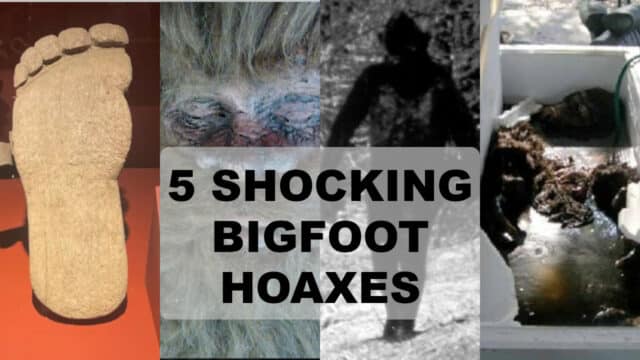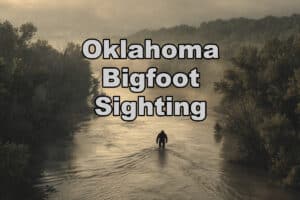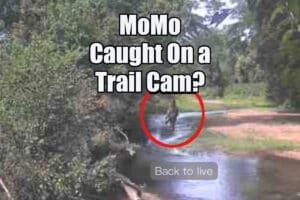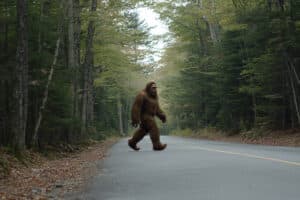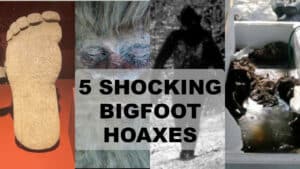
Bigfoot – The Myth, The Legend, and Sometimes The Hoax
Bigfoot is a mysterious creature that many believe lives in the forests of North America. For years, people have been fascinated by stories of Bigfoot. However, there are also many hoaxes about him. These tricks include fake footprints and staged meetings. They add to the mystery but also muddy the waters for genuine Bigfoot researchers who are trying to prove the existence of Sasquatch.
In the article, I take a look at 5 of the most famous Bigfoot hoaxes, some of which are still debated about today!
Unraveling the Myth of Bigfoot
For many people, the thought of a large, ape-like creature hiding in the wilderness is exciting. The story of Bigfoot captivates us because it mixes our interest in the unknown with stories and hints of proof.
Yet, when we look deeper, we often see patterns of false claims and misunderstandings. These can be clear lies or just mistakes in seeing what is really there. This shows us how important it is to analyze carefully and look at the facts when we think about amazing claims like the existence of Bigfoot.
The cultural impact of Bigfoot in America
The Pacific Northwest is known as a popular area for Bigfoot. People there have woven Bigfoot into their local stories and attractions. Many know about its presence through legends and as a draw for tourists.
Bigfoot is also a big part of popular culture. You can find the creature in many books, films, and TV shows. These often show Bigfoot as a mysterious being. A well-known example is the 1967 Patterson-Gimlin short film, which looks like it shows Bigfoot walking in the woods. This film proves how much people are interested in Bigfoot and sparks debates about if it’s real or not.
Bigfoot’s influence is not just in the Pacific Northwest. There are many Bigfoot sightings reported all over North America, making it a key part of American folklore.
A Short History Of The Bigfoot Legend
The legend of what we commonly refer to as Bigfoot started in Northern California in 1958. A newspaper called the Humboldt Times wrote about large, unknown footprints found near Bluff Creek. This event caught the attention of many people across the country.
The name “Bigfoot” came from this discovery, linking the creature to those first footprints. The area around Bluff Creek is now known for Bigfoot. It attracts researchers and fans eager to see the mysterious Sasquatch.
As time went on, the legend grew with more sightings, unclear photos, and stories from people. This shows how history and folklore can change and grow, turning a single event into a big cultural topic.
The Dyer Bigfoot Hoax

In 2008, two men from Georgia, Rick Dyer and Matthew Whitton, caught everyone’s attention. They said they had found a dead Bigfoot. They showed blurry pictures and set up a news conference to share their claim. This caused a big stir in the media.
But the truth was much less exciting. When they finally revealed their discovery, it turned out to be just a rubber gorilla suit. This caused a lot of people to criticize them. It showed that they had come up with a plan to make money from the public’s interest in Bigfoot.
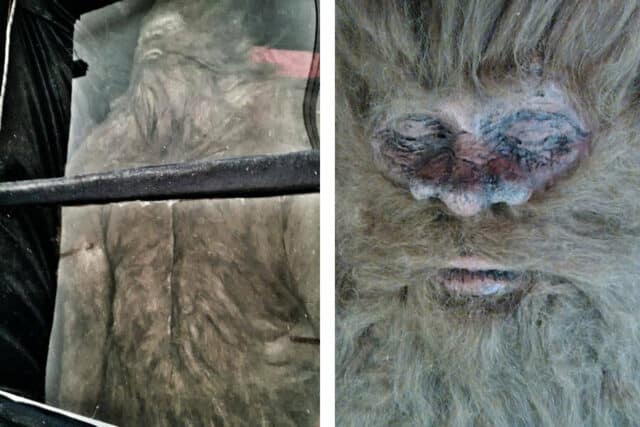
Unveiling the story behind the hoax
Dyer and Whitton planned their hoax very carefully. They used social media and regular news sources to create excitement. Before the news conference, they leaked blurry pictures and interesting details, which made people curious. Their story got more attention when they said they found Bigfoot’s body while hiking in the Georgia wilderness. They connected it to old tales of Bigfoot sightings in remote places.
But their careful plan fell apart during the news conference. They showed a fake Bigfoot that did not look real at all. This moment revealed problems in their story. It also showed that they did not respect the real work of those who are seriously searching for proof of Bigfoot’s existence.
Public reaction and aftermath
Social media was filled with criticism and jokes when news of the hoax spread. Many people felt let down and angry at the Georgia men for tricking them. They felt used because they wanted to believe.
Skeptical publications, like the Skeptical Inquirer, helped prove the hoax was false. Benjamin Radford, a well-known investigator, carefully looked at the evidence. He pointed out mistakes and showed that the “Bigfoot” body was fake.
The Dyer-Whitton hoax is a warning. It shows how important it is to be skeptical and think critically when looking at unusual claims. It also stresses the need for good evidence and warns against sharing wrong information, especially on social media.
Ray Wallace and the Wooden Footprints
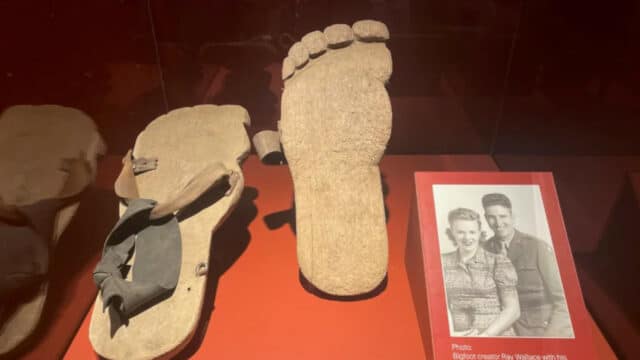
The famous Bluff Creek footprints started the modern Bigfoot craze in 1958. Later, they were found to be a hoax created by Ray Wallace. This was uncovered after Wallace died in 2002, when his children revealed their father’s secret.
Wallace used carved wooden feet to make the now-famous prints near Bluff Creek. This trick made a mystery that amazed people for many years. He kept up the act for a long time, stirring public interest and becoming an important part of Bigfoot stories.
Origins of the wooden footprint hoax
Ray Wallace’s reason for the hoax came from wanting to play a funny trick. In 1958, after he found some very large footprints near his construction site, he decided to make carved wooden feet to make things more amusing.
He made the footprints to get a reaction from his coworkers and maybe be featured in a local news story. To his shock, the Humboldt Times wrote about the footprints, making the story popular across the whole country.
What started as a fun prank quickly got out of hand. It changed from a local joke into a big cultural trend. Because of this, he kept up the hoax for many years. He was worried about being found out and did not want to let down the people who believed in the Bigfoot story.
How Wallace’s prank shaped Bigfoot lore
Wallace’s prank had a profound impact on the Bigfoot phenomenon, shaping the way people viewed future “evidence.” The Bluff Creek footprints became a benchmark for comparison, with subsequent claims often judged against these initial tracks.
Wallace’s actions, though intended as a prank, inadvertently fueled the Bigfoot debate, prompting a greater need for scientific rigor in evaluating such extraordinary claims. His hoax serves as a reminder that even seemingly compelling evidence can have mundane explanations.
The Marx Hoaxed Footage
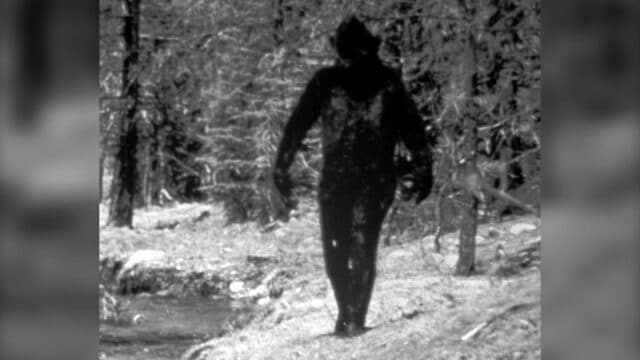
In 1972, Peter Marx, who said he was a monster hunter, showed video he claimed was of a Bigfoot family in Oregon. The film showed ape-like creatures, including a mother, a baby, and a young one, searching for food near a clearing.
At first, some people were excited about the footage, but doubts quickly came up. Researchers and visual effects experts found many issues with the film. Most people ended up believing that Marx’s film was just another complicated hoax.
Analysis of Marx’s contribution to Bigfoot hoaxes
Marx’s footage came out when people were still very interested in Bigfoot. This interest was driven by the Patterson-Gimlin film and a lot of reported sightings. Marx used this excitement to tell a story about a family group of Bigfoot. This story matched what many people imagined Bigfoot to be like—a social animal.
However, Marx’s footage was quickly challenged. Experts pointed out strange parts, like unnatural movements and how clean the creatures looked.
Even well-known Bigfoot supporters, such as Grover Krantz, had doubts about Marx’s claims. Krantz had once defended the Patterson-Gimlin film but later called Marx’s footage a clear fake.
Debunking the footage
Over the years, many investigations have shown that the Marx footage is not real. In the 1970s, the FBI did a hair test. They found that the hairs from Marx’s “Bigfoot” costumes did not match any known primates.
In 1985, Scientific American released an article that pointed out many mistakes in Marx’s film. The piece mentioned the creature’s smooth movements, which hinted at the use of costumes or puppets that people were controlling.
The Skeptical Inquirer, a top source for scientific skepticism, has always listed Marx’s footage with other Bigfoot hoaxes. These debunkings show how important expert studies and scientific methods are in telling real evidence apart from fake stories.
The Minnesota Iceman Mystery
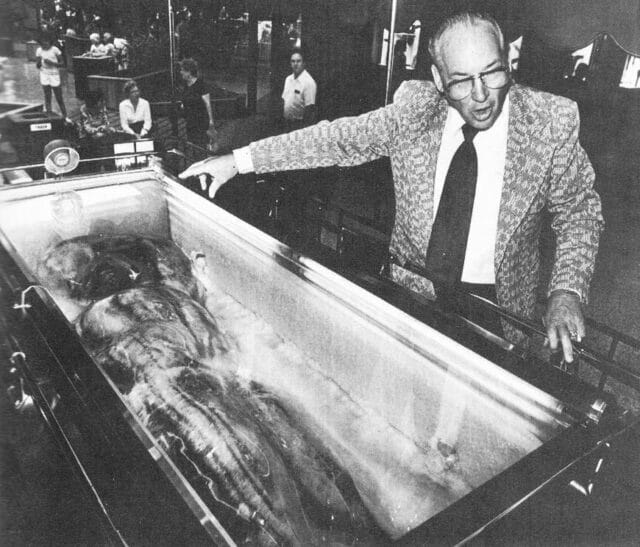
In 1968, Frank Hansen drew in crowds with a strange attraction called the “Minnesota Iceman.” This was a hairy figure that looked human and was kept in a block of ice. Hansen showed the Iceman at carnivals and fairs. He claimed it was the preserved body of a prehistoric human—a missing link in human evolution.
As Hansen shared his story, many people started to doubt if the Iceman was real. Over time, the truth came out, showing that Hansen’s display was just a smart hoax.
The iceman’s discovery and exhibition
Hansen said he got the Iceman from a nameless person who found it frozen in the Bering Sea. He shared exciting stories about trips to hidden places, sparking interest in the search for unknown creatures.
His shows attracted a lot of attention. Articles in Live Science and other magazines talked about the Iceman, making people more curious and starting discussions about its possible role as a missing link.
He even traveled with the Iceman around the United States, showing it off in New Jersey and other states. This helped make it well-known in popular culture and grew the mystery around where it really came from.
Investigating the truth behind the frozen figure
Hansen made some claims, but there were many problems that came up. He would not let scientists look closely at the evidence, especially the DNA evidence and genetic analysis. This made people suspicious and raised doubts about the Iceman’s story being true.
Anthropologists who studied the Iceman noticed differences in its body that went against Hansen’s claims. They found that its form looked more like a human but with some features that were overly dramatic.
In the end, the lack of solid scientific proof and Hansen’s uncooperative behavior made many believe that the Minnesota Iceman was just a well-made hoax. This situation showed how risky it is to make exciting claims without proper scientific checks.
The Jacobs Photo Controversy
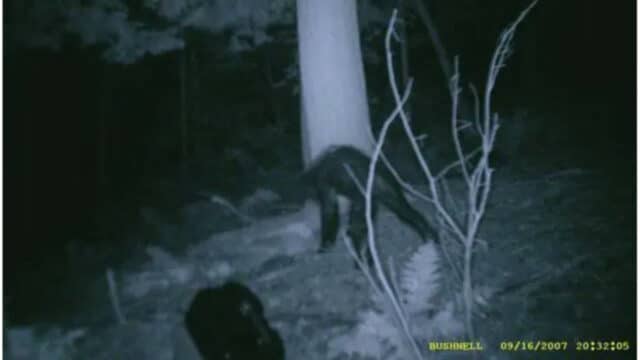
In 2007, a police officer from Georgia named James Wilson took a photo. The picture showed a dark figure squatting in the woods. Many people believed it could be proof of Bigfoot.
But like many Bigfoot stories, some people questioned it. After checking more into it, they found some parts of Wilson’s story did not add up. This led to the photo being proven as a hoax.
Details of the 2007 photo hoax
The hoax fell apart when people noticed problems in Wilson’s story. He first said the photo was real and showed a creature he saw while off-duty in the Georgia woods. But when he was asked more questions, his story changed, making people doubt the photo.
Later, Wilson confessed that he made up the photo. He admitted that the “juvenile Bigfoot” was actually just a person dressed in an ape suit. This shocking news drew a lot of attention. News sources, including CNN, reported on the tricky hoax.
The Jacobs Photo Controversy showed how important it is to think critically. It warned us not to believe extraordinary claims without proof. We should always be skeptical, even if someone, like a police officer, shares a convincing story.
Impact on Bigfoot research
The Jacobs photo incident and other hoaxes have greatly affected Bigfoot research. They added to the long list of false evidence. This has made many people more skeptical and caused real researchers to be more careful.
Scientific American has often pointed out how much harm these hoaxes cause to the real study of unknown creatures.
These events show that we need real evidence and strict scientific methods when looking for Bigfoot. By staying skeptical and asking for reliable proof, researchers can better understand Bigfoot sightings. They can tell apart genuine research from made-up stories.
Conclusion
In the world of Bigfoot myths and hoaxes, stories can change what we see as true. Many people are fascinated with Bigfoot, leading to complex hoaxes and debates. This creates confusion between what is real and what is not. As we look into these surprising hoaxes, we see how storytelling can captivate us. Our curiosity about mystery and the unknown drives us forward. Each uncovered hoax adds to the complex mix of stories and doubts about Bigfoot. These tales make us question not just if Bigfoot exists but also how much we want to believe in unusual things.

